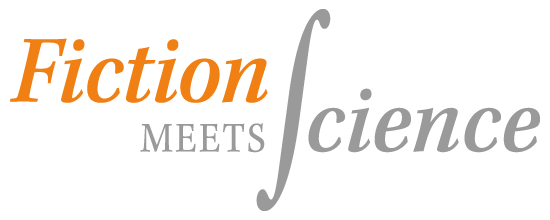2a. Specific narrative forms and aesthetic strategies in English and German science novels
In this project, we investigate the literary means by which science novels present and produce knowledge. Working comparatively across contemporary Anglophone and German literature, we take a narratological approach to the full spectrum of novels in the FMS corpus in order to determine whether the fictional representation of scientific discourse requires distinct narrative forms and aesthetic strategies. Are there narrative and aesthetic structures that are particularly common in, or even specific to, the portrayal of science? How do scientific concepts impact narrative, plot, and aesthetic form? What particular kinds of metaphors are used to depict scientific phenomena, and do these represent the "poetics of knowledge" that Hans Magnus Enzensberger maintains can overcome the schism between nature and art (Enzensberger 2003; Vogl 1999)? How do realist and postmodern narrative forms differ in their treatments of science and in the kinds of knowledge or understanding that they generate? We aim to develop a comprehensive typology of narrative patterns and aesthetic forms that will help us to characterize and categorize the recent treatments of science in literature.
We pay particular attention to the impact of narrator and voice, and the meaning of humor in these works, and to the special forms and strategies that appear in historical novels about science. We explore how the presentation of science is affected by the perspective of the novels' narrators, whether homodiegetic (within the story) or heterodiegetic (outside the story), and examine how scientific content is mediated and shaped by the narrator and his or her position in the process of narrative transmission (Chatman 1978: 22). Here, distinctions between a novel’s focalizer, who provides a subjective filter of events, and its narrator, who recounts them (Genette 2007), can play a particularly important role in conveying scientific concepts. We examine the contextual frames that allow readers to assess the reliability of the narrative voice in both historical and scientific terms, and the literary strategies used to signal that the narration is unreliable (cf. Fludernik 2009). In this context, we analyze how the narrator conveys a scientist's mental processes, whether by diegesis (superimposed effects) or mimesis (direct representation), and what impact these two modes have on the communication of the novel’s scientific content.
Humor depends on context, on familiar types, intertexts, and references, and it is these characteristics that have been employed in science novels by some of the most influential authors—by Ian McEwan in Solar, for example, and Hilary Mantel in The Giant, O'Brian. Humor is not only used to render science and scientists funny in these works, but also to connect scientific knowledge with its cultural and historical context. Mieke Bal (2006) has shown how humor affects narrative coherence, how it is detached from mimesis—from "realistic" literary representation—because it relies on preconceived notions, stereotypes, and knowledge, and on the embrace, rather than the suspension, of disbelief. We use her approach as a methodological starting point to explore how satire, irony, sarcasm, comic intertexts, and the grotesque inform the literary representation and conveyance of knowledge in novels that deal with the sciences.
Both humor and narrative perspective are crucial in determining a reader's understanding and perception of science in a novel. Unreliable narration can lead the reader to question the reliability of the scientific knowledge in the story, while irony and parody may render it more "real" by placing it in historical and cultural context. Sarcasm and the grotesque may serve to ridicule dogmatism when it impinges on the creation of knowledge, while a subjective point of view encourages the reader to identify with the scientist in his or her pursuit of knowledge.
